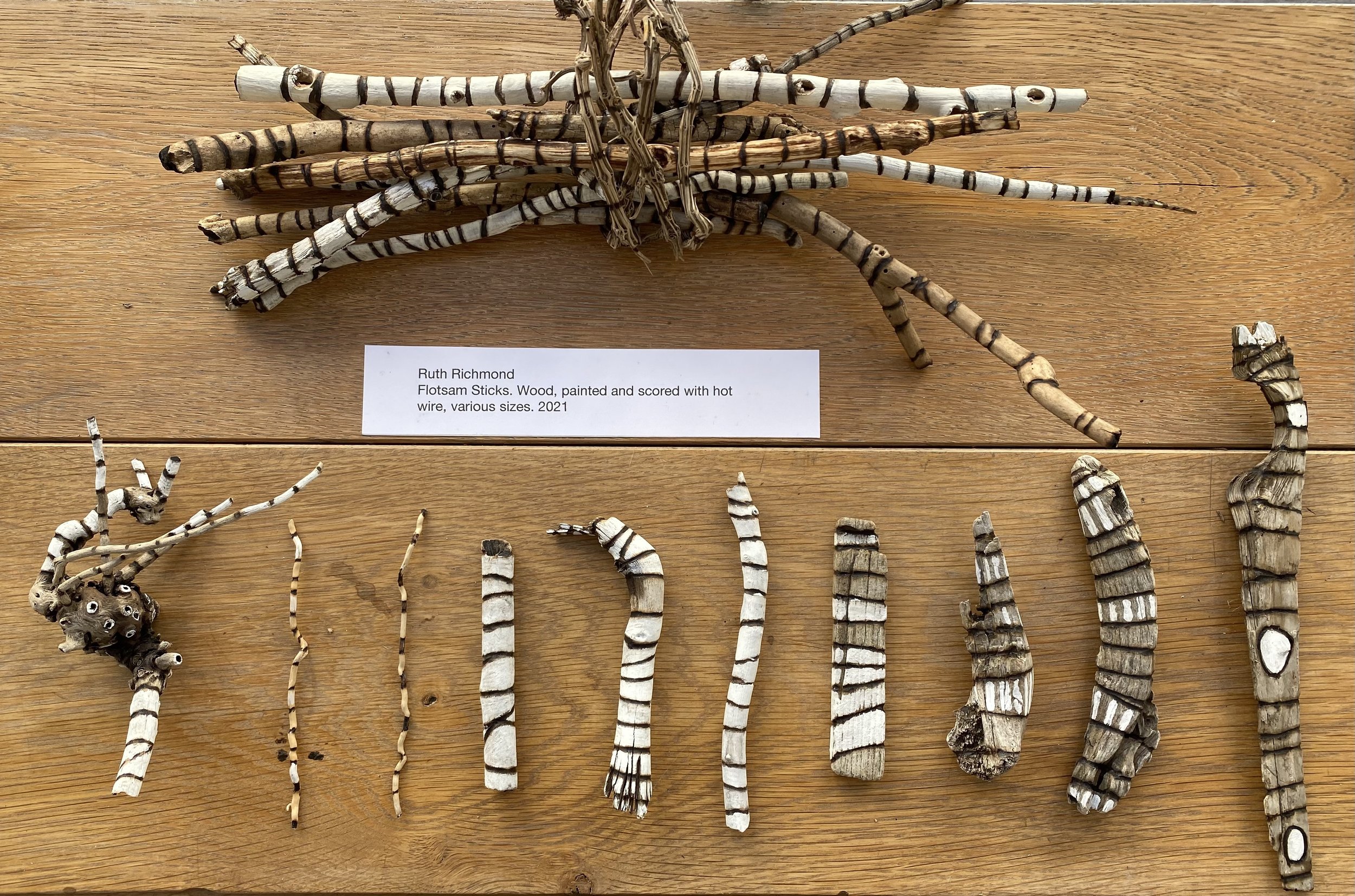Walking a line from the mouth of the River Deben to its source: From Felixstowe Ferry to Debenham. 3/21-3/22

Ultramarine Soil Painting

Soil Painting Deben Soundings

Deben Soil

Painted Flotsam Sticks
This project is to study the course of the river estuary, the change it makes and its resulting impact on its human and wildlife landscape as seen from a scientific, artistic and community viewpoint.
Instead of concentrating on one area and watching this change I have been walking, in stages and on both sides, the length of The Deben Estuary to see how the landscape alters and to understand and create a rapport with its unique environment. I have been observing how human intervention has either benefitted or been detrimental to its terrain, flora, fauna, wetland habitats and business or recreational uses. I have been listening to discussions and the arguments between human maintenance and natural evolution of the estuary at the mercy of weather and tides.
Through much discourse and wandering it appears that both states have been happening, areas of intervention creating sea walls preventing flooding into homes and businesses against allowing the salt marsh to find its own evolution. Not withstanding the need to allow for recreational use such as boating, walking access and summer pastimes.
The fundamental constituency of the estuary and the base of the flood plain and the river bed is silt. For some time I have been collecting soils from my site of interest which I make into paint and then use in my work. For this Deben Sounding project I decided to survey the soil types found on the waters edge. So during each walk I would scoop up several spoons of ‘mud’. I collected approximately 3 types of soil samples, visually as diverse as possible, within my walking area prescribed for that day. All the samples have been collected within .5 meter from the waterline.
I have formed a collection of soils which I grind, mix to form glair paint and then paint onto a coloured background to form paintings which also resemble a scientific ‘slide’ showing the variety of earth colours and textures.
My second interest is working on coppiced hazel poles on which I draw and paint, sometimes using paint collected from the same site.
The small sticks that I have collected from the soundings are taken from the flotsam on the northern beach at Bawdsey where the sea meets the river mouth. These have been washed up onto the shingle by substantial wave movements. Their original physical textures have been smoothed and worn by the wave action rolling them around on the shingle until they land far enough away from the waves to lie randomly in an alien landscape, separated from their natural habitat. Their original identity and genus hard to distinguish. I have used them as a ‘canvas’ and imposed my thoughts and ideas onto them in the form of drawings. I have then made these sticks into bundles reminding me of the polder defences used in areas along the river such as upstream from Waldringfield. As seen from the public footpath on top of the sea wall.
For more information about these pieces contact Ruth via email ruthrichmond@me.com or @ruthrichmond66